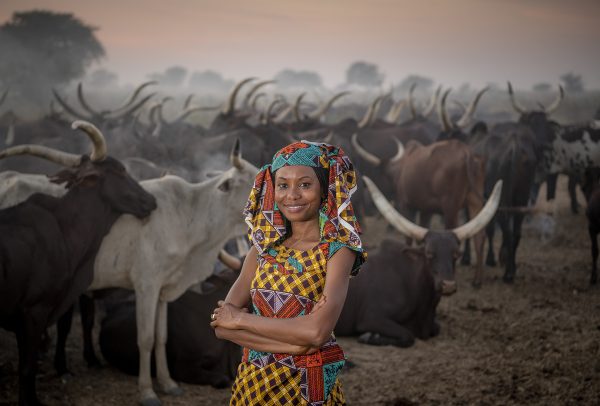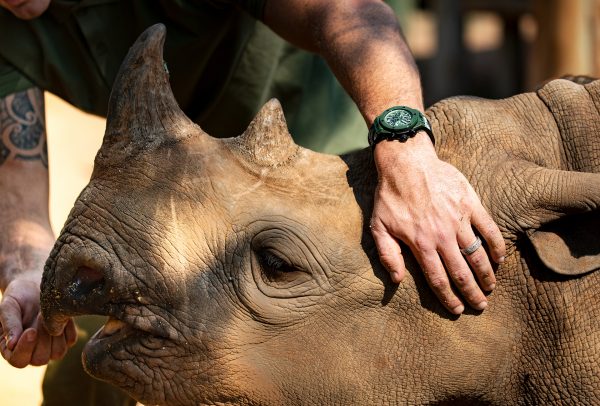“There is no economic and financial stability without respect for nature and without nature’s contribution, because our economies depend on it. That’s why we need to make sure that economic decisions internalise the damage inflicted by our societies on biodiversity.” In her keynote speech at the IUCN (International Union for Conservation of Nature) World Conservation Congress in September 2021 in Marseille, France, the President of the European Central Bank, Christine Lagarde, painted an alarming picture of a planet whose species populations are declining so rapidly that scientists now refer to the sixth mass extinction. Over the past half a billion years, there have been five episodes when life on Earth disappeared almost entirely, the result of an intense ice age, volcanic eruptions or the meteorite that smashed into the Gulf of Mexico 65 million years ago to destroy entire species, including the dinosaurs.
Two centuries to zero
Now history is repeating itself, with the difference that this sixth mass extinction is entirely the fault of humans and human activity such as hunting, the introduction of invasive species or climate change. And to make matters worse, the current extinction rate is one hundred times above normal background extinction levels. Elizabeth Kolbert is the author of The Sixth Extinction, which won this year’s Pulitzer Prize for general non-fiction. In an interview to National Geographic, she warns that “we are now changing the climate very, very rapidly by geological standards. We are changing the chemistry of all the oceans. We are changing the surface of the planet. We cut down forests, we plant mono-culture agriculture, which is not good for a lot of species. We’re overfishing. The list goes on and on. […] The sort of fundamental question is, can 7.3 —going toward 8, going to 9 billion people —live on this planet with all of the species that are now still around?”

The answer to this question is far from reassuring. According to the WWF Living Planet Index, the population sizes of vertebrate species have declined by an average 68% since 1970. In less than 50 years, between 1970 and 2016, the planet lost more than two-thirds of its mammals, birds, amphibians, reptiles and fish. Since the pre-industrial age, 85% of wetlands have been lost. Over the past 30 years, insect populations have declined by 75%. If nothing is done, at the current rate the sixth mass extinction could take place within the next two hundred years. Never in the history of humanity has the threat of seeing all life disappear from Earth been so very real, with the consequence that action to halt biodiversity loss is now as urgent as action to stem climate change. Indeed, the two are connected as biodiversity plays a key role in climate regulation. The more acidic the oceans get, the more forest we destroy, the more out of control global warming will become. On the other hand, protection of ecosystems could contribute one-third to achieving the Paris Agreement carbon emission reduction target for 2030.
Actions speak louder than words?
So what are we waiting for? The agenda of events taking place in 2022 indicates there is no shortage of awareness. The One Ocean Summit taking place in Brest, France, in early February will be followed in July, in Lisbon, Portugal, by the UN Ocean Conference. The UN Earth Summit Stockholm+50 in June is described as a springboard to accelerate delivery of the Sustainable Development Goals, the Paris Agreement on climate change and the post-2020 global Biodiversity Framework. The COP15 Biodiversity Conference will convene in April and May in Kunming, China, to agree on a new set of goals, such as to protect at least 30% of Earth’s sea and land mass by 2030, including 10% with “absolute protection” status. Then, in November, the COP27 will meet in Sharm el-Sheikh, Egypt, to discuss the last report of the sixth Assessment cycle by the IPCC (Intergovernmental Panel on Climate Change), which will be published end February. We can also look ahead to judicial action when the European Court of Human Rights examines a lawsuit for climate inaction filed against 33 countries by six Portuguese youths. A ruling by a French court has already found the French state guilty of failing to take sufficient action to meet commitments to reduce greenhouse gas emissions in “L’Affaire du Siècle” (“the case of the century”) brought by four NGOs. In the United States, the Supreme Court is to examine a petition by West Virginia, backed by nineteen Republican-led states, which challenges the authority of the US Environmental Protection Agency to regulate air emissions.

Regrettably, all too often these international meetings amount to little more than a declaration of intent, while resolutions clinched after intense negotiations frequently disappoint for their lack of ambition. The IUCN Congress in Marseille adopted 39 resolutions and recommendations (in addition to 109 that were adopted in 2020). These include recognition of the rights of indigenous peoples, a motion to reduce the impact of the mining industry, restoration of primary forests and the protection of human, animal and environmental health. Now it’s down to individual states to follow through, knowing that political responses to environmental urgency have thus far fallen short of the mark. An example: France, which hosted the IUCN Congress, abstained from voting in support of a moratorium on deep seabed mining; an attitude that Greenpeace condemned as going “against history”. Protecting sources of revenue for the multinationals and kingmakers is one thing; there is no getting away from the facts as Rémy Rioux, Chief Executive of the French Development Agency, made clear at the IUCN Congress: “This goes beyond funding natural parks and nature reserves. The entire economic system must change direction. We cannot reasonably expect the same growth, the same return on investment as thirty years ago. The time has come for a more patient, less profitable world.”
Multinationals step up
It would take an estimated annual investment of $1 trillion to have a positive impact on biodiversity, a figure that currently struggles to reach $150 billion. Eighty per cent of this is public money, prompting calls for multinationals to take up the slack, which they clearly have the means to do. This is especially true for the luxury sector whose operating margins, at an average 20%, are among the most comfortable of any industry. In this context, why not put nature before shareholder interests? The planet’s future ahead of short-term profit? As idealistic and simplistic as it may sound, the idea is gaining currency with the luxury giants.

A partner to the UNESCO Man and the Biosphere Programme, LVMH has made biodiversity one of the pillars of LIFE 360, which is the group’s environmental performance roadmap. “Protecting natural ecosystems has always been an essential priority for LVMH, whose activities depend largely on natural raw materials, from flowers, grapes and cotton to leather and precious gemstones,” comments Antoine Arnault, at the head of LVMH Image & Environment. “The ‘ACT for biodiversity’ partnership with UNESCO is a key pillar of our strategy, enabling us to challenge the norms, to have a positive and lasting impact beyond our supply chain and to demonstrate that it is possible to reconcile economic development and protection of nature.” In practical terms, LVMH is deploying measurement tools such as the Global Biodiversity Score and aims to make a positive net contribution to biodiversity by 2030. The group is committed to respecting animal welfare in the procurement of raw materials and to not using raw materials from zones with a high risk of deforestation or desertification. It has also announced the deployment of regenerative agriculture programmes for strategic agricultural raw materials such as grapes, cotton, wool and leather. The objective is to regenerate the equivalent of five million hectares of habitat for flora and fauna by 2030.

Similarly, Kering is aiming for a positive net contribution to biodiversity by 2025. The group has endowed a €5 million fund in support of regenerative agriculture. Its biodiversity strategy outlines steps to minimise biodiversity loss across the group’s global supply chains, support nature and create net positive conservation. Compagnie Financière Richemont, which considers its activities do not have a significant impact on biodiversity, nonetheless adheres to a strict code of conduct, citing alligator leather as a “counterintuitive” example of its action. “The fact that alligators only lay eggs in nature allows swamps to remain swamps,” says Matthew Kilgariff, who is Richemont’s CSR Director. “If it were not so, Louisiana’s landowners would not maintain their natural conditions. They would destroy the biotopes on which 8,000 species depend, including alligators. The promise of an economic reward, inserted in a regulatory context that guarantees the balance between human activity and biodiversity, has allowed the Louisiana alligator population to grow exponentially in recent decades.”















